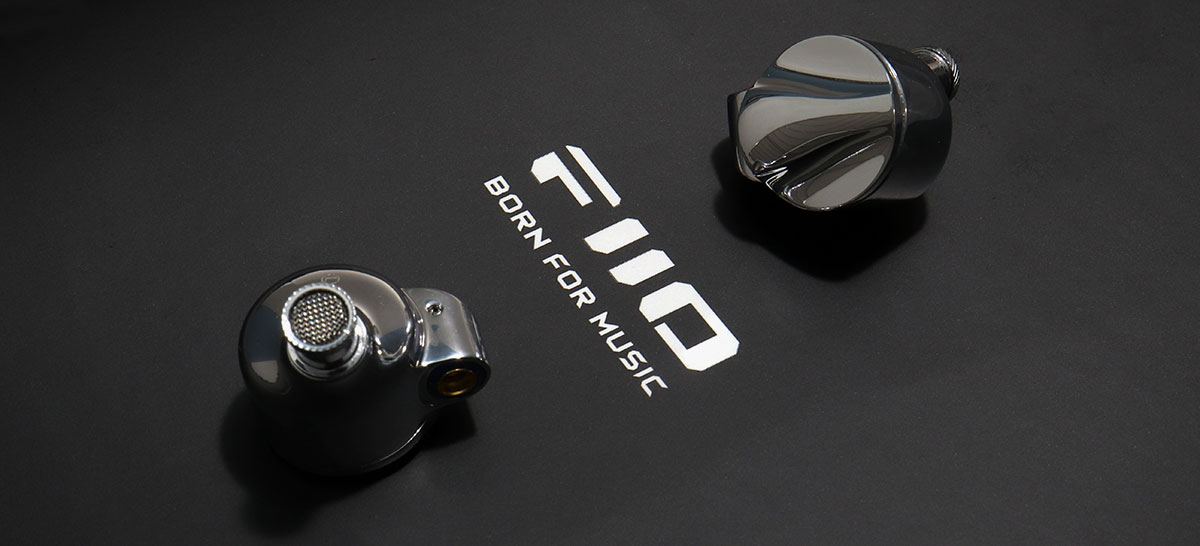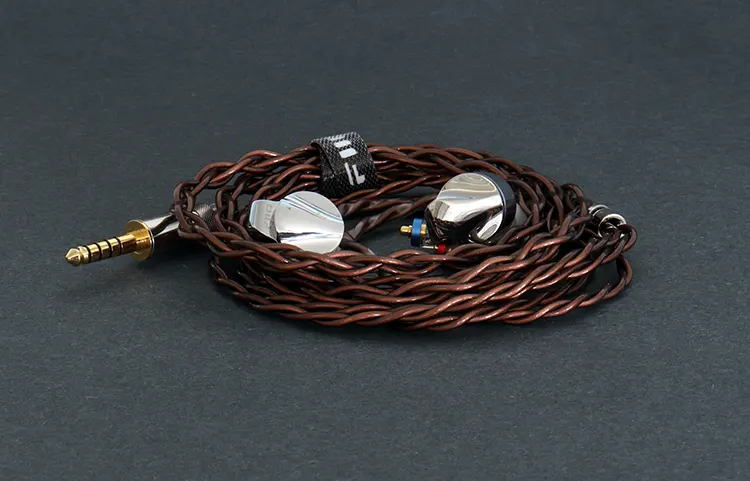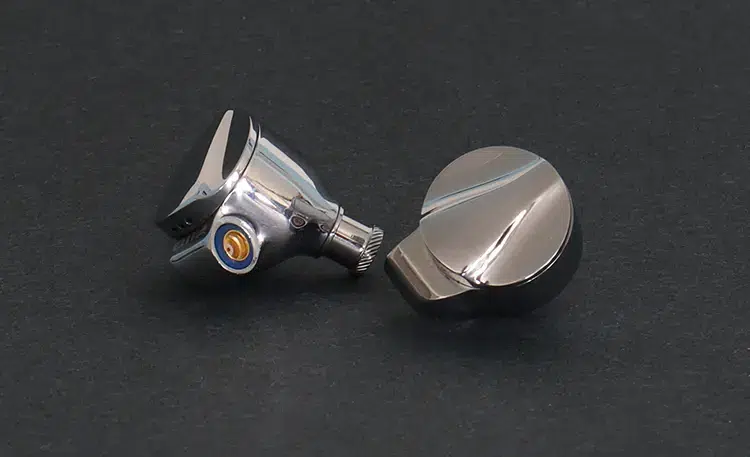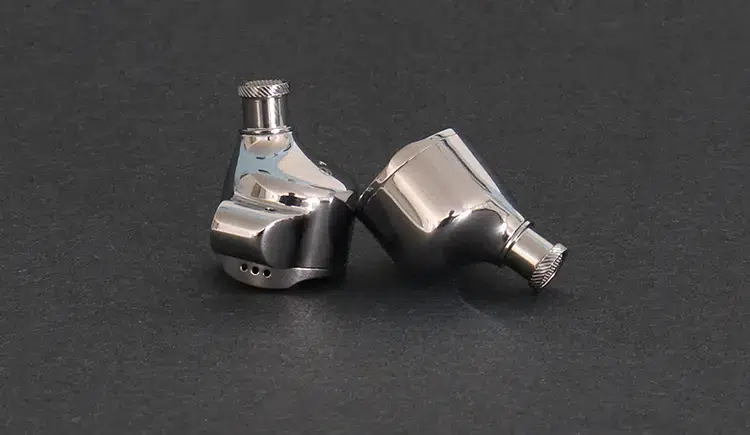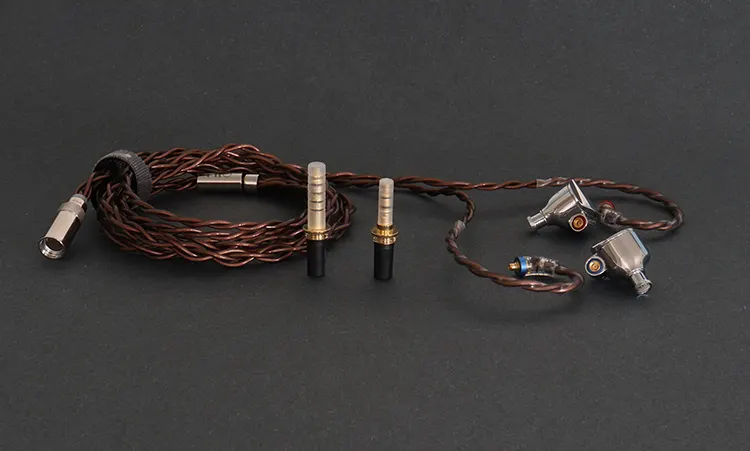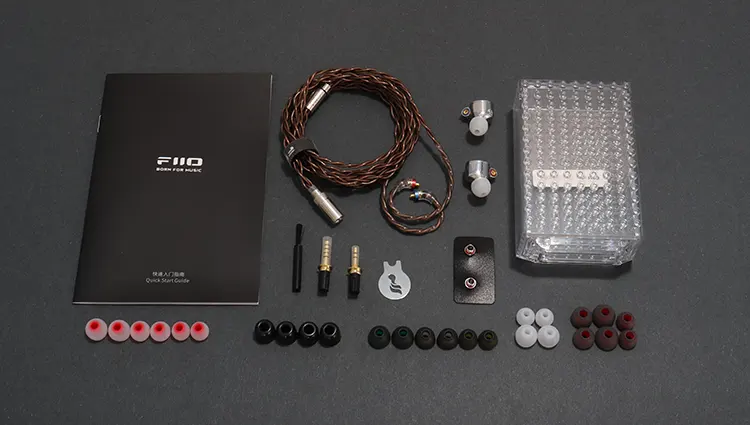Today, Louis reviews the FiiO FD15, a single 13.8mm dynamic driver universal in-ear monitor and the successor to the FD5 launched in late 2020. It is priced at $149.99.
Disclaimer: This sample was sent to me in exchange for my honest opinion. Headfonics is an independent website with no affiliate links or services. I thank FiiO for their support.
You can click here to learn more about the FiiO audio products we have previously reviewed on Headfonics.
Note that this post follows our current scoring guidelines which you can read in more detail here.
FiiO is back at it, this time with an IEM that expands its current FD series of IEMs.
I was excited when I heard that FiiO was expanding its FD IEM lineup because I enjoyed the FD5 and especially the Beryllium driver-equipped FD7.
The FD15, priced at $149.99, is the model up for review today. If you go by the designated model number alone, you would think this model should fall into the top-tier position within their single dynamic IEM model lineup, but it’s not. This model is quite affordable.
Features
FiiO always crams its IEMs with many patented implementations; the FD15 is no exception. Even though the FD15 is technically a budget model, it still brings home a lot of bacon.
The FD15 uses FiiO’s F.T.B.S. Tesla Valve bass-enhancing acoustic technology. This implementation according to FiiO improves bass response. Alongside that, there’s the Frontal Acoustic Prism with adaptive phase adjustment.
Most of the tech inside the FD15 was inherited from its big brothers, the FD5 and the FD7. The FD15 is also available in a silver or black color scheme.
I would suggest going over to their product page and checking out FiiO’s literature on this model. The FiiO FD15 seems to be a baby FD5 for less cash and it has lots of FiiO’s unique IEM implementations and tweaks.
Driver configuration
The FiiO FD15 unveils a redesigned driver and an unusually large one, 13.8mm to be exact. Most IEMs use drivers that are 10mm on average or smaller.
This particular unit is a composite driver made with a Magnalium diaphragm, a combination of aluminum and magnesium, and a W-shaped DLC gasket which FiiO claims to increase the effective vibrating area by 30% and I bet the shape also helps to gain some rigidity.
The driver also sports a larger voice coil than the FD5’s driver. It’s an 8.6mm copper voice coil versus the voice coil from the FD5 which is 6.2mm. The voice coil was also lengthened by 1.38mm.
The driving force behind the voice coil is a 1.5 Tesla extended magnet design. The magnet set within the FD15 is powerful. So much so that these buds cannot be within a little over an inch or closer to each other because their magnetic forces smash them and stick together quite violently.
Design
The FD15’s shell size is identical to the FD5 except that the backplate is closed with no rear venting and intricate decorative design.
The body does have four visible vent holes, one is on the angled output nozzle and the other three are barely visible and are right by the MMCX connector side-by-side with the FiiO etched-in logo.
Venting is a method of driver-tuning but it can also relieve ear pressure which is a major source of ear fatigue.
The shells are made of highly polished 316L Stainless Steel with three sections; a back plate, a cylinder-shaped main body and driver cavity, and an angled nozzle purposely set at a 6.7-degree angle.
Comfort and Isolation
The cylinder and angled output nozzle design is one of my favorite designs for comfort. This approach has been used by many IEM makers such as ORIVETI, TIN Audio, and of course, FiiO.
I like the overall design for comfort because the shell barely touches your ear. You mostly feel the tip insertion and the ear loop of the cable assembly.
As far as isolation, I immediately noticed a good amount of isolation but from distant sounds and not so from nearby noise. The FD15 is a good IEM if you want to stay aware of your immediate surroundings and block out all the rest.
Tips
My favorite tips within the FD15’s included accessories are the FiiO brand HS18 because of their comfort level. Whatever material they’re using works well for me. They don’t do much for sonic quality but they sure are comfortable.
What I found surprising is that FiiO did not include any regular black rubber tips which I customarily use. I dislike foam tips on this set because I find them to emphasize peaks but everyone’s ears are different.
The balanced ear tips were my favorite sonically and it was for a good reason that FiiO decided to preinstall one of those sets on the FD15.
Stock Cable
The FD15’s stock cable from the inside out, is composed of 448 strands of Furukawa Monocrystalline Copper with a plating of Furukawa silver. In total, there are approximately 22 gauges worth of wiring inside the four-wire braid.
Within the four-wire assembly, the strands of wire are coaxially braided and are also heat-treated to 1050 degrees. I remind you that this is a budget IEM set.
The cable assembly uses the fabulous Fabrilous swappable tip system that took us out of the good old days when we used to use adapters. The FD15 set contains a 3.5 and a 4.4mm balanced tip.
All the hardware is metal and polished to match the IEMs. The chin split has the FiiO branding with a matching adjuster. The cable uses expanded MMCX connectors with ear loops, so no complaints here.
Packaging & Accessories
At this tier, you will not find a better accessorized IEM than the FiiO FD15. However, there’s one thing I felt was a last-minute inclusion. I think this accessory was included to store the extra contents and not the IEMs.
The FD15 comes with a Pelican case that has a slide-out drawer that does not have any padding inside so I would not store the IEMs or any IEMs directly inside that case, just the accessories.
Besides that, you couldn’t ask for anything more than what you get. FiiO includes an MMCX removal tool, an eyebrow brush, the cable assembly, and two interchangeable tips for the cable assembly.
Speaking of tips, FiiO includes a 14-pair collection of tips that include two foam tip sets, three of their HS18 tips which are some of my favorites, three balanced tip sets, three bass tip sets, and three sets of vocal tips but no plain-Jane Black tips. Regardless that’s a decent set of tips for this price tier.
Sound Impressions
To test the FD15 I decided to go with the FiiO house sound with my M11 Pro DAP. I also used SMSL’s SU-X and SH-X combo since It was on my desktop at the time.
I also used the FiiO KA17 and the FiiO Q11 with a OnePlus Nord as the source. I also used these components connected to my Windows 11 custom PC, FLAC files, and Foobar. No special drivers were used on any of these devices.
Summary
The first aspect of the FiiO FD15’s sound signature that hits you is the midrange quality which seems to be this set’s forte and the sonic area in which it performs best. The overall signature can be considered balanced but that midrange realism is the first thing that grabs you.
The bass response seems effective down to 24Hz and distributed evenly with no midbass bloat. It transitions smoothly into the midrange and evenly with no apparent peaks or dips in that transitional area.
If the volume levels are adjusted high, you could experience some congealment and it seems to be at the very top level of the driver’s limits as far as SPL, perhaps a product of the closed-back design that limits cone excursion which in turn and to counterbalance tightens up cone movement.
There is a peaky area around 7kHz but it’s not too harshly projected until the volume is pushed to very loud levels.
The high frequencies are somewhat dark but not obscure and they’re not shy but drop considerably fast above 10kHz. They do remain controlled at moderately loud levels.
Bass
The bass response is capable but needs some equalization because the stock tuning seems modest, and the bass output seems too neutral and clinical with a lack of fundamental presence.
Once a small boost is applied, done. The bass can be quite satisfying because at that point the driver gains body and depth within the bass frequencies.
This driver is capable of producing fast, deep tactile notes. The FD15’s bass is a tasty, well-prepared dish with a lack of salt.
Some might like the stock monitor-like bass but I wouldn’t consider this model a good one for that purpose, not for mixdowns, but for everyday listening. Yes.
Midrange
FiiO does specify on its product page that the FD15 was specially optimized for vocal and conversation quality and it shows but they took it way beyond the phone call quality level I must say.
The vocals on the FD15 are realistically portrayed, male and female vocals alike sound natural, and all the instrumentation that takes up the midrange spectrum is produced with a proper pitch.
The only time the midrange veers from a pleasant listen is again, when things get loud but if you use a moderate volume level the midrange will consistently treat you to a coherent and soothing sonic experience.
If you look at FiiO’s frequency response measurements, you will see a large hump in the 2kHz region which I believe to be the source of the midrange’s forwardness but there’s also a 7k peak. You can see it on the frequency graph.
Treble
If you like a balanced signature, I suggest running the Black filters because they also have the best high-frequency production of the two sets. The red set produces highs a bit tart but you might prefer that over the sharp, but detailed frequencies of the Black filters.
The high frequencies with the Black filters are relaxed although emphasized, they’re on the dark side in tone, not obscure, however, and because of that, you get a soothing signature that produces high frequencies that are clear but not harsh until you push the drivers hard.
When you use the Red filters, the treble is produced with a lot of presence and it’s brought forward in a manner that notes become more distinct but these filters show flaws in high-frequency response within recordings.
If that occurs, I suggest switching back to the Black filters which are more forgiving overall, especially within the high-frequency ranges even though they produce an increase in output which is ironic.
Staging & Dynamics
The FD15 has a familiar FiiO soundstage that is wide and deep and not too large, or medium-sized. That’s the way live music sounds to me unless I’m in a cathedral or a large stadium. I would label the FD15 soundstage to be realistic in size.
Positioning is fairly accurate as well and only when this set gets into loud playback levels of output which is when conglomeration happens and some of the pinpoint accuracy is lost.
It seems this set has a volume threshold and at some point, the driver loses control but you can still obtain very loud volume levels. This is a punchy set, as long as and especially if you boost that bass a few decibels.
Click on page 2 below for my recommended pairings and selected comparisons.

